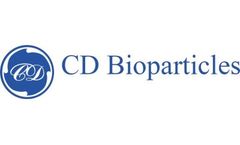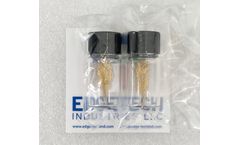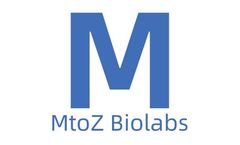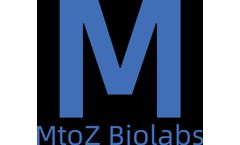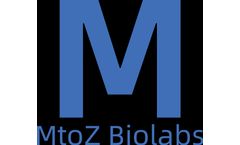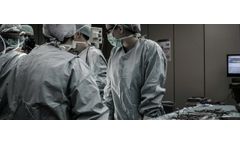Refine by
Blood Vessel Articles & Analysis
90 articles found
From aneurysm treatments to stroke interventions, the use of radiopaque marker bands ensures precise device navigation and placement within the intricate blood vessels of the brain. The innovation in materials, such as platinum-iridium alloys, enhances both visibility and biocompatibility, making these bands indispensable tools in modern neurovascular treatments. ...
It becomes crucial to investigate natural drug delivery systems when considering treatment methods for diseases. The blood circulation contains platelets as the second most abundant blood cell which perform multiple functions and present themselves as ideal drug carriers. ...
Vascular access The physician will identify an appropriate blood vessel for access, typically the radial or femoral artery. Catheter insertion A catheter will be inserted into the selected blood vessel, positioning the catheter tip at the cerebral vessel intended for examination. Contrast agent ...
Mechanism of Action Serrapeptase exhibits unique mechanisms that contribute to its effectiveness in treating various conditions: Anti-inflammatory Effects: By degrading fibrin, a protein involved in blood clotting and tissue healing, serrapeptase can help reduce inflammation. ...
One such innovation is the radiopaque marker band, a crucial component in catheters used to navigate the complex network of blood vessels within the body. These tiny bands, often no larger than a grain of rice, enable medical professionals to precisely track the placement of catheters during invasive procedures. ...
Others synthesized and shaped RBCNPs (red blood cell membrane-encapsulated nanoparticles), and targeted the excised red blood cell membranes twice, with DWSW peptide and asparagine-glycine-arginine (NGR) peptide. ...
Wharton’s jelly is a gelatinous substance that surrounds the umbilical cord’s blood vessels, providing structural support and protection. It is rich in mesenchymal stem cells (MSCs), which are known for their unique regenerative properties. ...
These specialized cells line the blood vessels within skeletal muscles, forming a barrier that regulates the exchange of substances between the bloodstream and muscle tissue. ...
Collagen is an important structural protein that is widely found in various biological tissues, such as skin, bones, tendons, and blood vessels. Accurate determination of collagen content is very important for biomedical research, disease diagnosis and quality control of related products. ...
Glycated collagen mainly exists in various tissues in the human body, especially those rich in collagen, such as skin, bones, joints, blood vessels, and other connective tissues.Under normal physiological conditions, glycation occurs as a natural biochemical process, but its degree is usually low. In certain disease states, especially in patients with diabetes, ...
The field of medicine is constantly evolving, with new procedures and technologies emerging that improve patient outcomes and reduce recovery times. As these innovations advance, the materials that make them possible become increasingly important. One such group of materials, fluoropolymers, is proving to be essential for a variety of cutting-edge medical procedures. Known for their exceptional ...
Its distribution in the tissue is very slow, and the volume of distribution is usually small, so the mAb drugs are generally limited to the blood vessels and the interstitial space of the tissue. After intravenous injection, the distribution of mAb from vascular to interstitial space is mainly through convection (fluid flow from the blood to ...
This enzyme is known for its ability to degrade elastin, a key protein that provides elasticity and resilience to tissues such as skin, lungs, and blood vessels. Understanding the functions and implications of elastase is crucial in biochemistry and medicine, as it has a significant impact on both health and disease. The Biological Function of Elastase Elastase ...
In cancer treatment, monoclonal antibodies (mAbs) can directly kill cancer cells, prevent the development of tumor blood vessels, and help the immune system kill cancer cells. Therapies based on mAbs have now become the gold standard for cancer treatment, and the number and types of clinically applicable mAb-based therapies are also increasing.1. ...
Understanding Sleep Apnea and Its Types Sleep apnea is a sleep-related breathing disorder that results in poor sleep quality and can lead to daytime fatigue or sleepiness, forgetfulness, and irritability. According to the Mayo Clinic, there are 3 types of sleep apnea to be aware of as follows: OSA or obstructive sleep apnea is the more common form of the disorder and affects roughly 30% of ...
Increased expression of MMPs is detected at different stages of mammalian development, from embryonic implantation to morphogenesis of different tissues and organs, including lung, bone and blood vessels. MMPs are involved in vascular smooth muscle growth, proliferation, migration, and relaxation. ...
In the dynamic landscape of modern medicine, technological advancements continuously reshape diagnostic and therapeutic approaches, fostering innovation and improving patient outcomes. Within this realm, the adoption of fluorinated ethylene propylene (FEP) and perfluoroalkoxy (PFA) tubing has emerged as a game-changer, revolutionizing various medical procedures across diverse specialties. Let's ...
Stroke, also known as transient ischemic attack or cerebrovascular accident, is an acute brain disease. Usually, a sudden rupture of a blood vessel in the brain or a blockage of a blood vessel that prevents blood from flowing to the brain can cause damage to brain tissue, resulting in a stroke. ...
Vascularization: Printing complex tissues with functional blood vessels is a major challenge. New approaches are needed to ensure that printed tissues receive enough oxygen and nutrients to survive. ...
ByMatexcel
It is important for employers to know the wind chill temperature so that they can gauge workers’ exposure risk better and plan how to safely do the work. It is also important to monitor workers’ physical condition during tasks, especially new workers who may not be used to working in the cold, or workers returning after spending some time away from work. The National Oceanic and ...


